
14 Healthcare Marketing Trends in 2025
To succeed in the healthcare industry, having a robust marketing strategy is essential for building brand recognition and connecting with patients. Check out these 14 tips to improve your healthcare marketing strategy.
The Healthcare Marketing Trends That Will Help in Patient Acquisition
- Video Content
- Online Scheduling
- Healthcare Gamification
- Optimizing for Voice Searches
- Social Media
- Using Healthcare Apps
- Website Design and Content Strategy
- Omnichannel Marketing for Unified Brand Experience
- Local SEO Strategies
- AI-Driven Marketing Personalization
- Building Value and Trust
- Prioritizing Inclusivity and Accessibility
- Reputation Management
- Boost Your Practice with These Trends
Healthcare marketing is changing fast. If you're trying to keep up, you've probably noticed how digital everything is becoming. But for healthcare marketers, it's not just about simply being online. It's about connecting with people in the right way, at the right time.
No matter if you're a small clinic or a big hospital, understanding these changes in health systems and healthcare marketing techniques can help you reach more patients and provide better care.
In this guide, we're taking a look at the current trends that are shaping healthcare marketing. From the digital shift to the power of phone calls, AI advancements, and the importance of being everywhere your patients are looking – we've got it all covered. We'll also touch on how to make your healthcare services even more personal and accessible for everyone and why your online reputation can make or break you.
No matter if you're new to this or if you’re trying to update your strategy, read on. Let's explore how you can make these trends work for your healthcare practice.
The Healthcare Marketing Trends That Will Help in Patient Acquisition
#1 Video Content
Videos are a powerful way to share information, explain complex healthcare topics, or just show the human side of your medical practice. Whether it's a tour of your facilities, patient testimonials, or educational content, videos can engage people in a way that text alone might not. And with more people watching videos on all sorts of devices, it's a great way to connect with potential patients wherever they are.
The Mayo Clinic knows how to make the most of video content. With over a million followers on their YouTube channel, they show that videos are a smart way to teach patients.
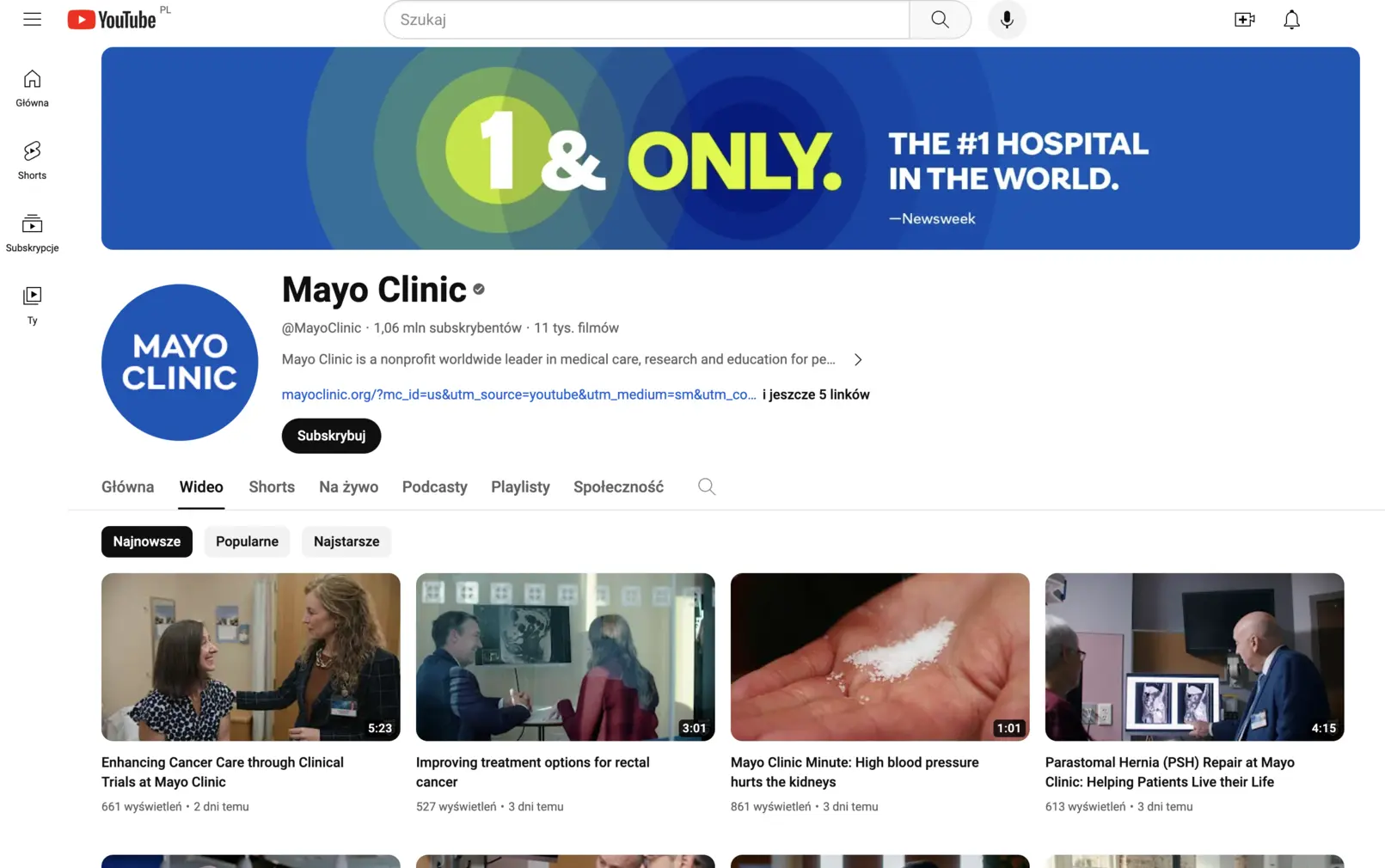
They talk about everything from how to donate organs to different ways to treat cancer. These videos do more than share facts — they make a personal connection with the people watching. This builds trust with those who might need their services one day. Even with a few educational videos on YouTube or social media, you can start small and grow your audience over time.
#2 Online Scheduling
Then there's the rise of online scheduling in the healthcare community, a convenience that's quickly becoming an expectation.
Larger healthcare organizations led the charge, but now, smaller practices are catching on. They're seeing the benefits of allowing patients to book their appointments online, anytime. As we discuss in our blog on online appointment scheduling for your healthcare practice, 67% of patients favor online booking, with 40% of these bookings occurring outside of the medical practice's regular business hours.
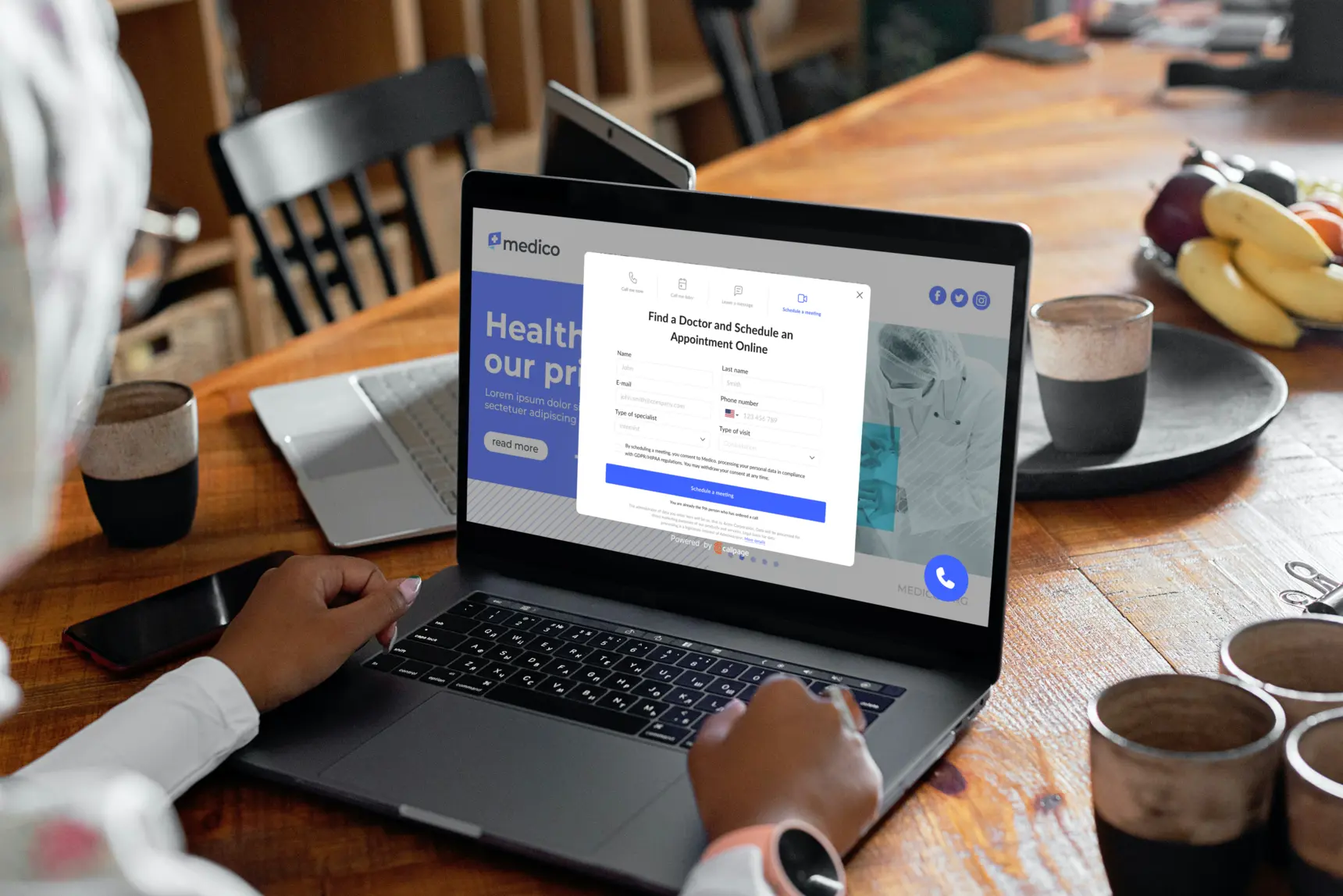
Why is online scheduling such a great addition to your healthcare digital marketing and advertising strategy? It's efficient, it's convenient, and it meets patients where they're already at: online.
READ ALSO: How To Pick the Best Online Appointment Scheduling for Your Healthcare Practice
#3 Healthcare Gamification
Healthcare gamification is becoming a standout trend among the best healthcare marketing strategies around, transforming the way healthcare providers engage with patients. This innovative approach, integrating game-like elements into healthcare apps, rewards patients for achieving health goals. This enhances medication adherence and healthy behaviors.
Why is gamification so important in healthcare marketing?
It enriches the patient experience and supports healthcare organizations in promoting better healthcare outcomes. By motivating prospective patients through interactive challenges and rewards, gamification strengthens patient engagement — this is a core objective for digital transformation for many healthcare providers and marketers.
This strategy fits seamlessly into the digital healthcare marketing toolkit and offers a new way to maintain patient loyalty and further patient retention. For medical practices, it’s a pathway to deepen connections with their patient base and encourage active participation in their healthcare journey.
A company that is a great example of this is "Virtually Better". Their healthcare marketing strategy is to offer a suite of apps and VR programs that turn health challenges into interactive experiences. For instance, they've developed an app designed to help parents and children tackle sleep issues with engaging, game-like elements.
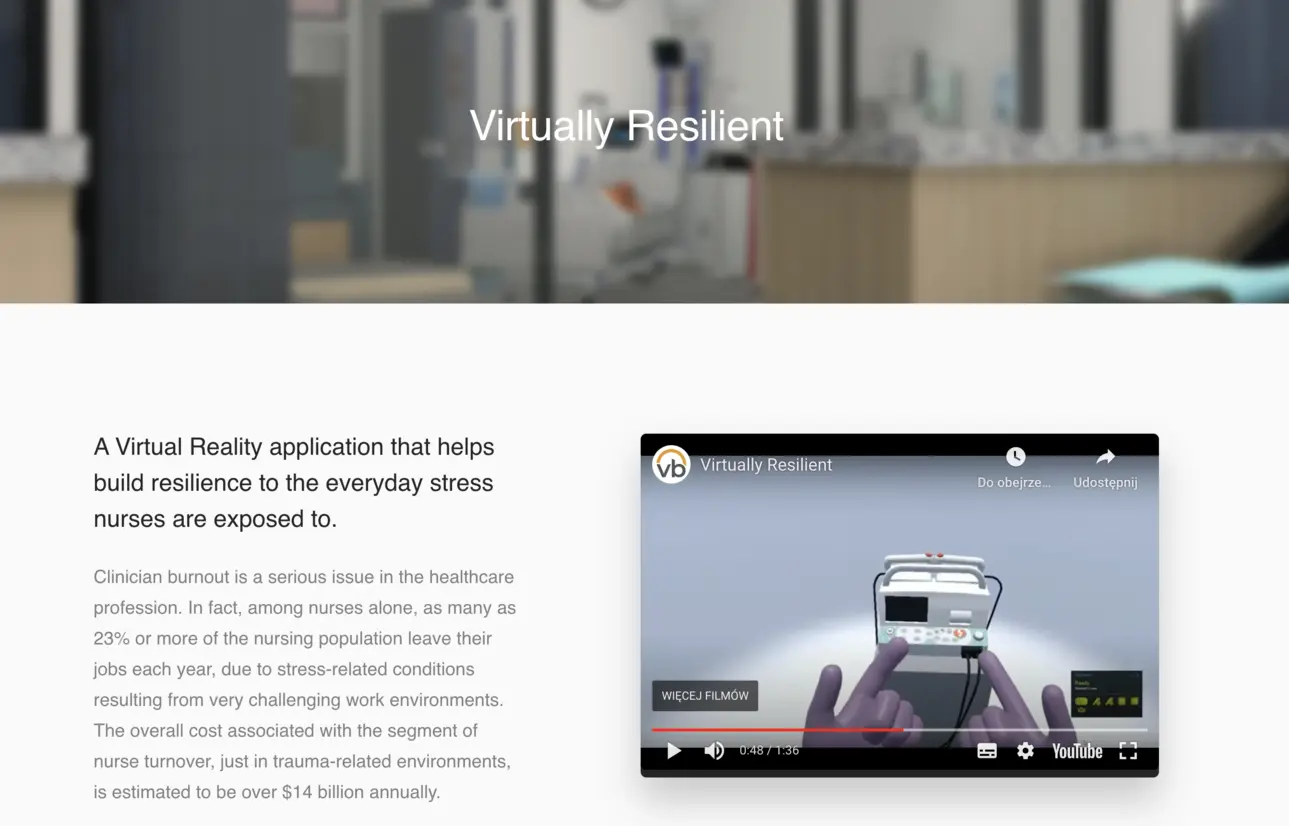
Source: virtuallybetter.com
They also run a virtual reality program that helps nurses build resilience, along with an app to support families managing children's anxiety.
#4 Optimizing for Voice Searches
Voice search is big, especially among people aged 25 to 40, with 58% using it. This means it's time to make sure your healthcare site talks their language.
How? By using long-tail and conversational keywords. Think about how people actually talk. They might say, "What's the nearest clinic open now?" instead of searching "clinic near me." So, your content should answer these real-life questions.
READ ALSO: How to Get More Patients? Proven Strategies for Doctors and Dental Practices
#5 Social Media
Social media isn't just for scrolling – it's where people check out medical services and facilities before they decide where to go. This means your social media game needs to be strong.
Examples of how social media is used in healthcare marketing:
- Share stories from real patients (with their permission, of course),
- Team up with influencers who can spread the word and keep your content engaging.
- Use Instagram for behind-the-scenes looks, X (old Twitter) for quick updates, and TikTok for fun, informative videos.
This is all about making connections and showing the human side of the healthcare industry.
A few years ago, Carilion Clinic in Virginia's Roanoke Valley launched an innovative social media campaign called "Yes, Mamm" to boost breast cancer awareness and highlight the importance of early detection. They used the hashtag #YESMAMM to engage users in Twitter chats to answer prevalent breast cancer questions and direct traffic to their website. This campaign proved the potential of platforms like X to connect with and educate the community on critical health issues.
#6 Using Healthcare Apps
Healthcare apps are making it super easy for people to book appointments, get health advice, or even manage their health records from their phone or tablet. This is a big deal because it means patients can get the help they need with just a few taps.
For healthcare providers, health apps are a great way to keep in touch with patients, send reminders, and provide support.
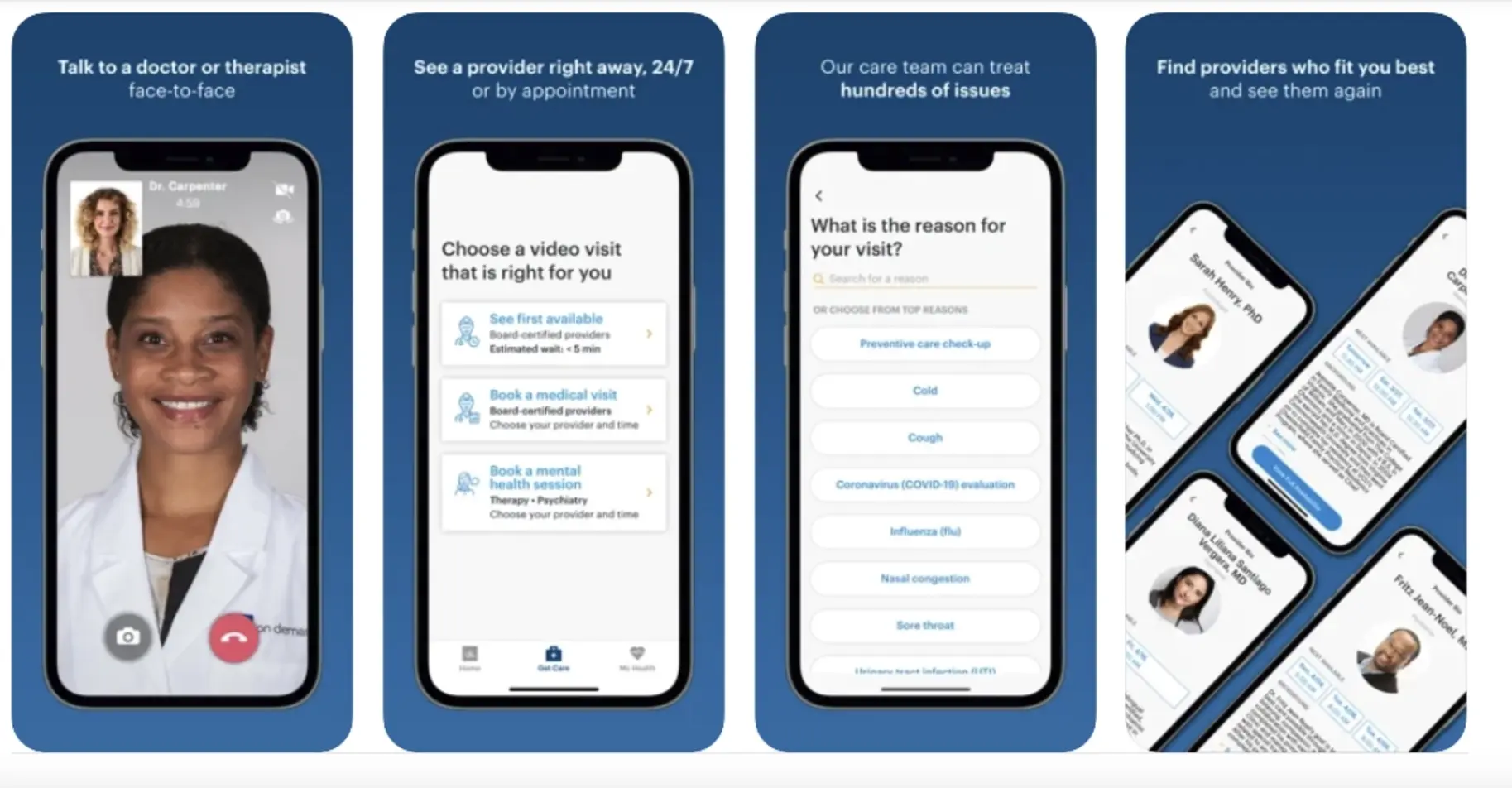
Source: doctorondemand.com
Doctor On Demand makes getting medical care through an app seem easy. Imagine being able to chat with a psychiatrist, manage your medications, or get help for a cold — all with just your phone. Available all day and night, this app is highly rated by its users.
#7 Website Design and Content Strategy
Here's a wake-up call: 38% of people will leave a website if it's not up to snuff, either because it looks bad or the content just isn't helpful.
- Your website needs to grab attention and keep it.
- Regular check-ups on your SEO.
- Make sure your site is easy to navigate.
- Filling the websites with useful, engaging content can make all the difference.
Think about what patients need to know and give it to them straight, with a bit of style.
A website that does a great job at this is Mountain Health. Their website shows how to make healthcare info easy to find and use.
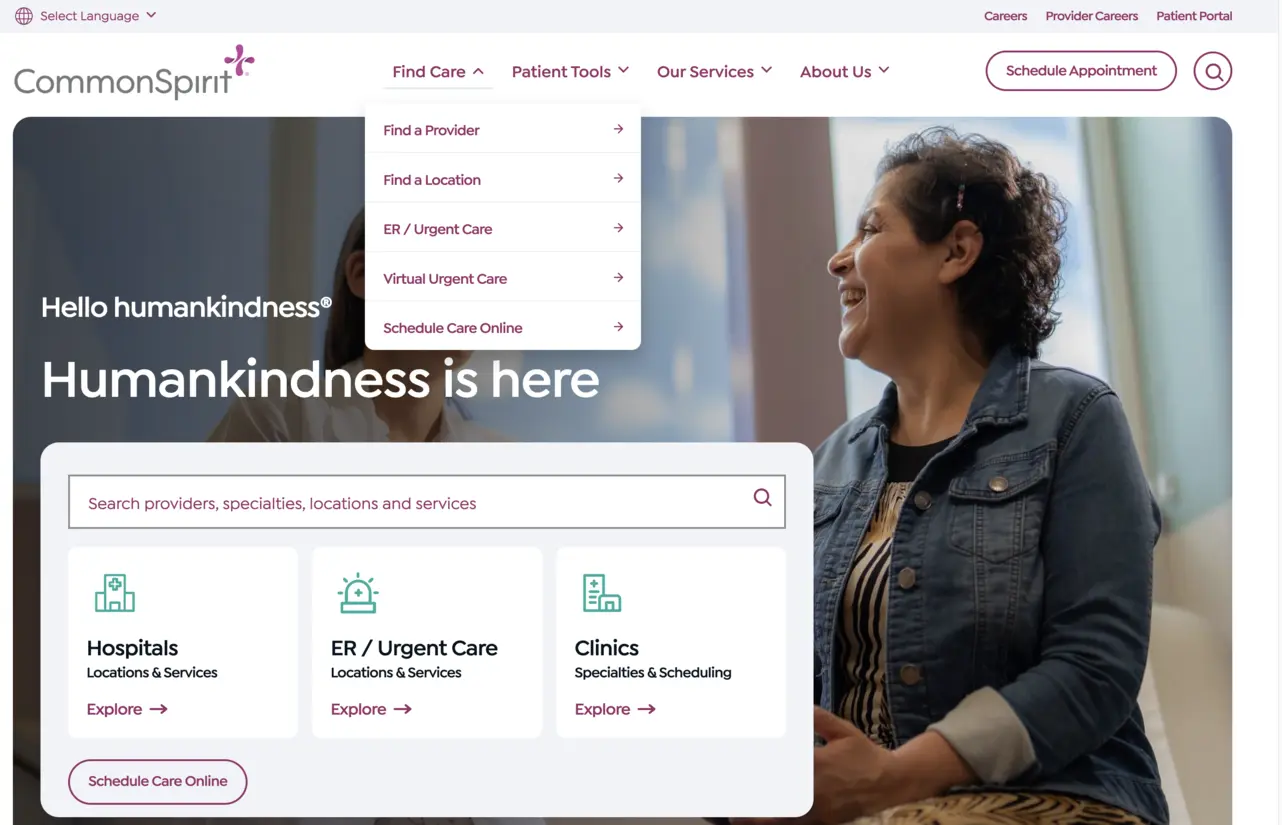
Source: mountain.commonspirit.org
They offer their site in many languages, which makes it very accessible for patients with different backgrounds. The design is clean and modern, which makes it look good and easy to navigate. You can quickly find services, locations, or book appointments.
#8 Omnichannel Marketing for Unified Brand Experience
Think about how you interact with patients: your website, social media, apps, maybe even in person.
Omnichannel marketing in healthcare ensures these multiple channels work together smoothly. This way, no matter how someone reaches out to you, they get the same great experience. It helps avoid confusion and keeps your message clear across all platforms. Nowadays, people jump from one device to another, so a unified approach ensures your healthcare provider or brand stands out and is easily recognizable.
READ ALSO: How to Improve the Patient Experience? 12 Proven Strategies
#9 Local SEO Strategies
Using different ways to reach out — like social media, emails, and your website — helps make sure patients hear your message loud and clear.
But it's not just about being everywhere patients seek you — it's also about being right where your prospective patients are. That's where local SEO comes in. It helps people in your area find you easily when searching for healthcare options. Getting this mix right means more people find out about you exactly when and where they need to.
#10 AI-Driven Marketing Personalization
AI (Artificial Intelligence) is like having a super-smart assistant who knows exactly what your patients need, even before they do. By looking at patient data (safely and within HIPAA rules, of course), AI can help tailor your own digital marketing strategies, campaigns, and messages to fit each person's needs.
Imagine sending out health tips that are just right for each patient or reminding them to book appointments when they're due. AI makes this personalized approach possible and makes patients feel seen and understood.
#11 Building Value and Trust
Now more than ever, healthcare providers need to build trust and show their value. This is especially true for practices that are stepping away from insurance plans.
How do you build trust and show your value to healthcare consumers?
Through personalized care, consistent messaging that speaks directly to patient's needs, and by showing the unique benefits of choosing your service. It's not just about educating patients more about the care provided but also about making patients feel truly seen and valued.
Cleveland Clinic really shows its commitment to patient-centered care right on their homepage. They put a big emphasis on making patients feel heard and valued.
How?
They provide easy ways to find doctors, make appointments, and access health information. They highlight their team of experts and stress the importance of listening to patients' needs before suggesting next steps. Plus, Cleveland Clinic is known for its high trust scores and national recognition, which reassures patients they're in good hands. They also focus on innovation and research so that patients have access to the latest treatments and clinical trials. This approach to healthcare, where every patient feels seen and cared for, sets a strong example of building value and trust.
#12 Prioritizing Inclusivity and Accessibility
Making sure everyone can use your website is not just nice – it's necessary. With the latest updates from the W3C's Web Content Accessibility Guidelines (WCAG 3.0), the goal is to make websites work for all people, no matter their abilities. This means thinking about how someone with visual or hearing impairments, or any other kind of disability, can access and move through your site.
Simple changes, like adding text descriptions to images or making sure the text contrasts enough with the background, can make a big difference.
Humana's website is a great example of a website that is easy for everyone to use, including people with disabilities. It follows rules that help users who use screen readers because of vision issues. The website uses clear text and images that stand out. Humana makes sure everyone can find what they need.
#13 Reputation Management
What people say about you online matters — a lot.
Actively managing your online reviews and patient feedback is vital for keeping your reputation shining. Positive patient reviews can attract new patients, while a quick, thoughtful response to any negative feedback shows that you care and are committed to making things right. Keeping an eye on what's being said about you online helps you stay in control of your story and keep attracting the patients you want to serve.
Boost Your Practice with These Trends
The world of medical marketing can feel overwhelming. But you're not alone. By giving these trends a shot, you can reach more patients and offer them the care they need in ways that truly speak to them. It's about being where they are, in a way that feels right. Digital spaces, phone calls, or through an app — every touchpoint matters.
The goal is to make healthcare more accessible, personal, and responsive. With the right approach, your healthcare organization can build trust, enhance your reputation, and stand out in a crowded market.
If you're looking to take your healthcare marketing to the next level, CallPage can help. Our tools are designed to make connecting with patients easier. We offer everything from instant callbacks to online appointment scheduling.
See how we can transform your patient experience and boost your marketing efforts. Discover new strategies on how to get more patients, or learn about how to improve the patient experience.
Ready to make a change in healthcare practices?
Apply healthcare marketing strategies and marketing efforts. Check out our resources if you want to let us help you support your journey toward a more connected and patient-centered healthcare marketing strategy.
Start generating leads today!
Start a 14-day free trial now,
set up the widget on your site, and see how many more leads you can capture with CallPage
- No credit card required
- 10 minutes set up
- 14 days fully-features free trial